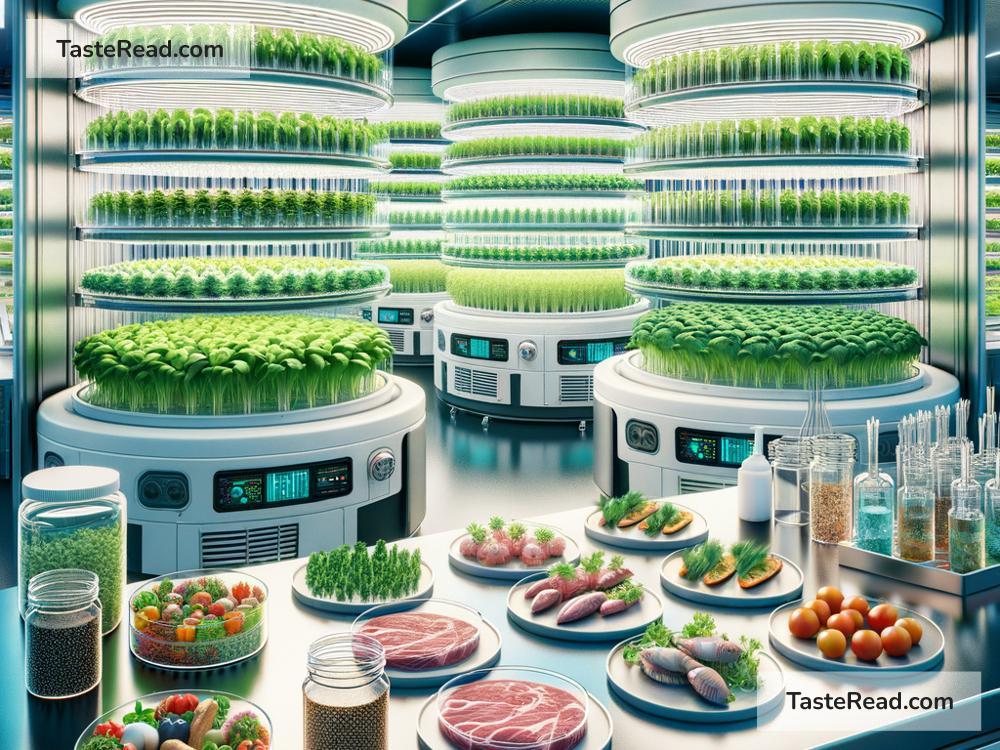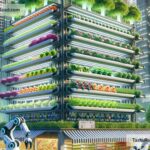The Future of Food and Global Solutions for a Sustainable World
Food is one of humanity’s most essential needs, yet the way we grow, distribute, and consume it is changing faster than ever before. From robotics helping farmers to lab-grown meat, the future of food is full of exciting, innovative possibilities. But with climate change, population growth, and other global challenges, we need systemic solutions—big global models that can ensure food security for everyone while protecting our planet. Let’s explore what this future might look like and how we can create a smarter food system.
The Challenges We Face Today
The global food system is under pressure. By 2050, the world’s population is expected to reach nearly 10 billion people. That means we’ll need to produce more food than ever before—some experts say up to 70% more than we do now.
At the same time, climate change is disrupting farming. Rising temperatures and changing weather patterns are making it harder to grow crops in some areas, while droughts and floods threaten livestock and key food sources. Add to that the issue of land scarcity: there’s only so much space on Earth for agriculture, and it’s shrinking as cities expand and forests are cut down.
Food waste is another problem. About one-third of all food produced globally is wasted, thrown out before it ever reaches our plates. This wasted food adds to greenhouse gas emissions and prevents resources—like water and fertilizer—from being used efficiently.
Finally, our modern food system isn’t fair to everyone. Millions of people still go hungry, while others live in places where food is plentiful but unhealthy. This imbalance highlights the need for global solutions that prioritize equity and sustainability.
How the Future Could Look
The good news is that we are not powerless. Scientists, farmers, governments, and businesses are working together on new technologies and ideas to build smarter food systems. Here are some of the innovations shaping the future of food:
1. Vertical Farms
Imagine skyscrapers not just for offices but for farming. Vertical farms grow crops indoors using stacked layers instead of traditional horizontal fields. These farms use less land, water, and pesticides, and they can grow food year-round—even in cities. Companies like AeroFarms and Plenty are already building these futuristic farms around the world.
2. Lab-Grown Meat
Many people enjoy burgers and chicken wings, but raising animals for meat takes up a lot of land and contributes to greenhouse gas emissions. Lab-grown meat, also called cultivated meat, is created by growing animal cells in a lab, meaning no animals are harmed and far fewer resources are used. Startups like Upside Foods and Eat Just are paving the way for meat that could be both sustainable and ethical.
3. Alternative Proteins
Another way to reduce our dependence on traditional meat is by turning to alternative protein sources. These include plant-based foods like soy and pea protein (used in products like Beyond Meat) or even proteins sourced from insects. Yes, insects! Though it might sound unusual, crickets and mealworms are rich in nutrients, and they require far less land and water to farm.
4. Precision Agriculture
Farmers in the future will work alongside robots, drones, and artificial intelligence (AI) to grow food more efficiently. Precision agriculture uses technologies like sensors and satellite data to monitor crops and soil in real-time. This means farmers can apply water, fertilizer, or pest control exactly where it’s needed instead of wasting resources.
5. Food from the Sea
The oceans cover more than 70% of our planet, but we use only a small fraction of their potential for food. Researchers believe aquaculture—farming fish, shellfish, and algae—could provide us with sustainable, protein-rich foods. Seaweed, in particular, is gaining attention as a superfood that can grow quickly while absorbing carbon dioxide.
6. Reducing Food Waste
Future food systems must tackle the issue of waste head-on. Technology can make it easier to track expiration dates, redistribute surplus food to people in need, and improve storage methods to keep food fresh for longer.
The Importance of Systemic Global Models
While these technologies are exciting, they won’t succeed unless we look at the food system as a whole. A systemic global model means designing food solutions that work for everyone—not just in wealthy countries but across the entire world.
For example:
– Education and Training: Farmer groups in developing countries need access to tools and know-how to improve their yields without harming the environment.
– Global Cooperation: Governments, businesses, and organizations must share research and resources to ensure food systems are sustainable everywhere.
– Support for Local Solutions: While global approaches are important, local communities often know what works best for them. Balancing global and local strategies is key.
– Making Food Accessible: Food needs to be affordable for the poor and nutritious for everyone, regardless of where people live.
A Balanced, Sustainable Food System
The future of food is both exciting and challenging. With vertical farms, lab-grown meat, and smarter technology, we can reimagine how food is made. But it’s equally important to focus on fairness and sustainability. Creating a food system that provides for billions of people while preserving the planet demands teamwork on a global scale.
It’s a big task, but with innovation and cooperation, humanity has the tools to make it happen. By working together, we can ensure that the future of food is not just abundant, but also healthy, equitable, and sustainable for generations to come.


